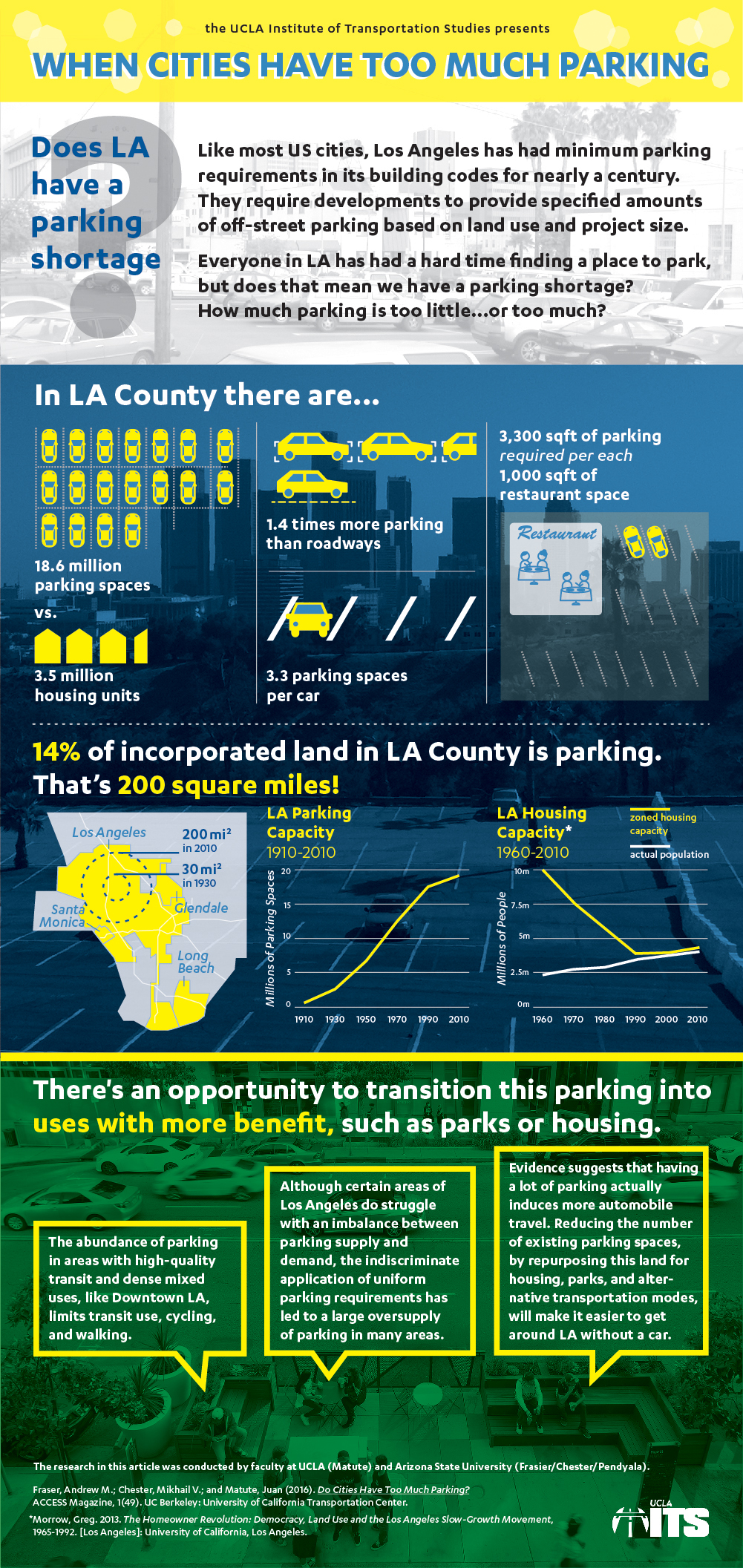Lost riders on L.A. Metro alone, which serves L.A. County, accounted for fully 72 percent of lost transit patronage across the entire state. Those losses are even further concentrated: Remarkably, just a dozen bus and rail routes in L.A. County account for nearly 40 percent of all the vanished ridership in California.
Right now, the best explanation seems to be a staggering increase in cars on the road, owned and driven by the very people who used to ride buses, the report states. From 2000 to 2015, the population of the Southern California region grew by 2.3 million people, and the region added 2.1 million household vehicles—close to one new car for every person and a huge jump from the previous decade. In the same period, the proportion of immigrant households that own zero vehicles dropped 42 percent, and a whopping 66 percent among Mexican immigrant households specifically.
The ridership gap and vehicle usage seems to be particularly high among immigrant communities that previously were a backbone demographic for transit.
What are the solutions? One option is simply to make it more expensive to drive a car, through mileage-based fees, congestion pricing, and other taxes and fees. There’s merit to that approach, particularly if the funds generated help support transit in those corridors as an alternative.
But the other alternative is to stop forcing people to use cars as the most convenient travel option, and similarly stop subsidizing automobile infrastructure, particularly “free” mandated parking. And that all boils down to land use. People use cars to travel because their home is nowhere near convenient transit, they may have readily available free parking on-site and at their jobs (while paying for it via higher home prices and rents), and their jobs and other destinations are similarly not near transit.
So the most effective solution, as we’ve seen all over the world throughout the history of transit, is to encourage more homes and jobs near transit. It’s not really complicated: we need to build transit-oriented, walkable and bikeable neighborhoods within a convenient transit-ride of clustered job centers. Needless to say, this is exactly the goal of SB 827 (Wiener), which would lift local restrictions on growth near major transit stops.
Possibly the biggest beneficiaries in government from an SB 827 to approach to housing would be transit agencies. These agencies across the country have suffered this declining ridership over the past decade, hurting their revenues and undermining political support.
So far I haven’t heard California transit agencies clamoring to support SB 827, probably due to the complicated politics involved. But if they were honest, they would tell the public that SB 827 and similar approaches are what is truly needed to bring ridership back.
When I lived in Los Angeles, I hated to pay for parking. And not just for the obvious reason of not wanting to part with precious dollars. My feeling was that if I had to put up with so much traffic, emissions, and space dedicated to the automobile, the least I could get out of it was free parking.
And now the UCLA Institute of Transportation Studies has put together the gory details on the impact of excessive parking requirements on Los Angeles land use, all in a handy infographic:
 You read that right: 200 square miles dedicated to parking, or 14% of incorporated land in the county.
You read that right: 200 square miles dedicated to parking, or 14% of incorporated land in the county.
The information is pretty disturbing but worth understanding to motivate reform. And the most obvious reform is to reduce or eliminate minimum parking requirements for new projects, particularly near major transit stops.


